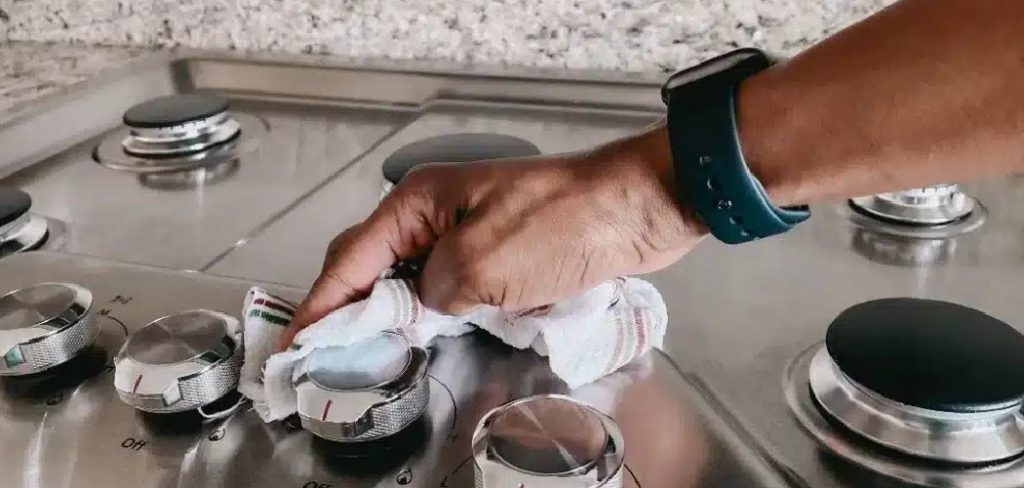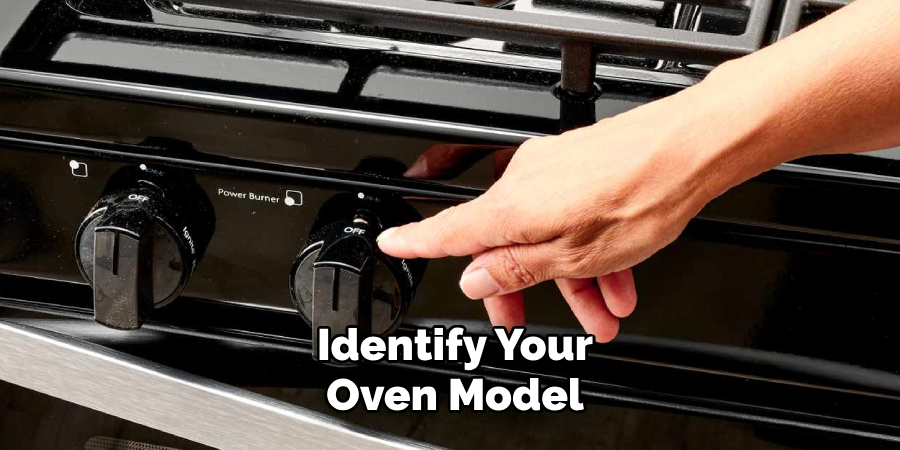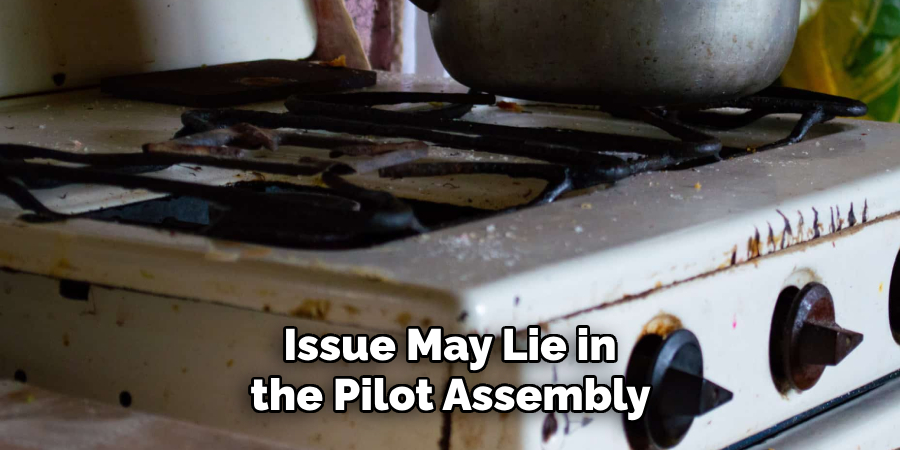Gas ovens are a popular choice in many households due to their efficiency and ability to provide consistent heat for cooking. However, understanding how to turn off a gas oven properly is crucial to ensure safety and prevent accidents. Leaving a gas oven on unintentionally can result in serious risks, including fire hazards and potential gas leaks, which may endanger your home and family.

This article provides a comprehensive guide on how to turn off a gas oven safely and effectively. Whether you are using a modern model with automated controls or a traditional manual oven, we will cover the essential steps for each type. Additionally, you will find troubleshooting tips to address common problems, such as persistent gas smells or malfunctioning knobs. Following this guide can minimize risks and maintain a safe kitchen environment, ensuring peace of mind while using your gas oven.
Understanding Your Gas Oven Type
Gas ovens come in different types, and understanding your specific type is essential for operating and shutting it off safely. Knowing whether your gas oven is manual, electronic ignition, or pilot light-based will help you follow the right procedures.
Manual Gas Ovens
Manual gas ovens typically require ignition with a match or lighter. These ovens are commonly found in older models and rely on a manual gas flow control that needs to be turned on or off by hand. It’s crucial to ensure the gas knob is fully turned off after use to prevent leaks.
Electronic Ignition Gas Ovens
Modern gas ovens often come with an electronic ignition system that uses an electric spark to ignite the gas burner. This system adds convenience and is generally safer, as you avoid handling an open flame. To turn off an electronic ignition oven, you typically need to switch off the gas control and ensure no spark triggers occur afterward.
Pilot Light Gas Ovens
Pilot light ovens always have a small flame burning as an ignition source. After turning off the oven, you should check that the pilot light remains on. If it has been extinguished for any reason, relight it following the instructions in the user manual to ensure the oven functions safely.
Identifying Your Model
To identify your oven model, check the user manual that came with your appliance or look for a manufacturer label, typically

located inside the oven door or on the back panel. This information helps you understand your oven’s unique features and operational needs.
How to Turn Off a Gas Oven: Step-by-Step Guide
Using the Control Knob
- Locate the oven control knob, which is usually marked with temperature settings or labeled with “ON” and “OFF.”
- Carefully turn the control knob to the “OFF” position. This action should stop the flow of gas to the burner and extinguish the flame.
Shutting Off the Gas Supply (If Necessary)
- If the oven does not turn off properly using the control knob, you may need to shut off the gas supply manually.
- Locate the gas shut-off valve, typically found behind or beneath the oven.
- Turn the valve clockwise until it is fully closed. This action will cut off the flow of gas to the oven entirely, ensuring safety.
Ensuring the Flame is Extinguished
- Once the knob has been set to “OFF” or the gas supply has been manually shut off, visually inspect the burner.
- Confirm that there is no visible flame remaining in the oven.
- If the flame persists despite following these steps, consult your user manual or contact a professional technician for troubleshooting and assistance.
By following these steps, you can ensure your gas oven is safely turned off, preventing any potential hazards.
Troubleshooting: When the Gas Oven Won’t Turn Off
Knob or Control Panel Issues
If the control knob becomes stuck or unresponsive, try gently wiggling it while turning to ensure proper engagement. Sometimes, food debris or wear can cause the knob to malfunction.

For ovens with an electronic control panel, a malfunction may prevent the oven from turning off. Unplug the oven immediately to cut the power and turn off the gas supply as a precaution. Further inspection or repairs may be required if these steps do not resolve the issue.
Faulty Gas Valve
A common issue that can cause a gas oven to remain on is a faulty gas valve. If the oven does not shut off even when the control knob or panel is switched to “OFF,” the internal gas valve may be stuck in the open position. This is a critical safety concern, and a professional technician will likely need to replace the gas valve to restore proper functionality.
Broken Thermostat
A faulty thermostat might fail to regulate the oven’s temperature correctly, causing it to remain on for an extended period. This issue can result from a damaged sensor or wiring problems. If you suspect the thermostat is the cause of the problem, contact a qualified technician to evaluate and, if necessary, replace the component to ensure safe operation.
Pilot Light Malfunctions
If your gas oven uses a pilot light and it does not extinguish when the oven is turned off, the issue may lie in the pilot assembly. A dirty or misaligned pilot light can cause persistent burning. Inspect the pilot light for dirt and debris, and clean or adjust it carefully following the manufacturer’s recommendations. If cleaning does not solve the problem, a repair technician should be consulted to diagnose and resolve the malfunction.

By addressing these issues systematically, you can identify the root cause of the problem and ensure your gas oven operates safely and efficiently.
Safety Precautions When Turning Off a Gas Oven
Safety should always be the top priority when dealing with a gas oven. Proper precautions ensure both your home and loved ones remain safe from potential hazards.
Avoiding Gas Leaks
One of the most critical steps is to check for gas leaks. Always sniff carefully near the oven or use a reliable gas leak detector to identify any leakage. Even a faint smell of gas should be taken seriously to prevent further escalation.
Ventilation
If you suspect any gas buildup, immediately open windows or turn on a vent fan in the kitchen to allow residual gas to dissipate. Proper ventilation reduces the risk of inhaling harmful gas fumes and minimizes the chances of ignition.
Handling Gas Smells
If you encounter a strong smell of gas and your oven won’t turn off, do not attempt to fix the issue on your own. Evacuate everyone from the premises promptly and contact emergency services or your gas provider for immediate assistance.
Regular Inspections
To avoid issues from arising, it’s essential to perform periodic inspections of your oven’s shut-off mechanism. Ensure it functions correctly and have any faulty components repaired by a qualified technician. Regular maintenance is key to ensuring reliable and safe oven operation.
Turning Off a Gas Oven During a Power Outage
Power outages can sometimes complicate turning off a gas oven, depending on its design. Proper handling in such situations is crucial to maintain safety and prevent hazards.
Gas Ovens Without Electrical Components
If your gas oven operates without electrical components, turning it off during a power outage is straightforward. Simply turn the control knob to the “OFF” position as you would under normal circumstances.
Gas Ovens with Electric Ignition
A power outage might prevent the oven from shutting off properly for gas ovens equipped with electric ignition systems. If the oven remains stuck on, locate the gas supply valve, usually near the back of the appliance or along the gas pipeline.

Carefully turn the valve to stop the gas flow entirely. This will cut off fuel to the oven and ensure it’s safely turned off until power is restored.
Avoid Using a Gas Oven for Heat
It is essential to avoid using a gas oven as a heat source during a power outage. Operating a gas oven for extended periods in this way can lead to dangerous levels of carbon monoxide buildup, which poses severe health risks. Always seek alternative, safer methods for heating your home.
When to Call a Professional
Persistent Gas Smell
This is a serious safety concern if you notice a strong gas odor that persists even after turning off the oven and shutting off the gas valve. Ventilate the area immediately and contact a licensed technician or your gas provider to inspect and resolve the issue. Never ignore a lingering smell of gas, as it may indicate a dangerous leak.
Broken Control Knobs or Valves
If the control knobs or gas valves are damaged and your oven does not respond to manual shut-off attempts, professional help is required. These components are integral to the safe operation of your appliance, and attempting repairs on your own could cause further damage or safety risks.
Recurring Issues
If you experience frequent malfunctions, such as the oven repeatedly failing to turn off or requiring frequent repairs, it may be time to consider replacing it. A professional can help evaluate whether a replacement is the safest and most cost-effective option.
Conclusion
Understanding how to turn off a gas oven is vital for ensuring safety in your home. Start by locating the control knob and turning it to the “OFF” position. If necessary, check for any lingering flames and shut off the gas supply immediately. Always approach gas appliances cautiously and seek professional assistance for persistent issues such as leaks or damaged components. Regular maintenance is key to keeping your oven in optimal condition, preventing malfunctions, and safeguarding your household. By staying vigilant and proactive, you can ensure your gas oven’s safe and efficient operation for years to come.
Professional Focus
Angela Ervin, a former interior designer turned blogger, specializes in kitchen design and renovations. Through her website, she blends her passion for cooking with design expertise, sharing practical and creative ideas. Known for balancing functionality and beauty, Angela’s insightful content has made her a trusted voice in home design and lifestyle.
About the Author
Angela Ervin, an experienced interior designer and blogger, combines her passion for kitchen renovations with storytelling. Living in Petersburg with her family, she enjoys cooking and testing her projects firsthand. Known for her humor and relatable style, Angela shares creative, functional design insights through her content, making her a trusted voice in home design.
Education History
University: Virginia Commonwealth University
Degree: Bachelor of Fine Arts (BFA) in Interior Design
- Angela’s education at VCU focused on mastering core interior design principles, including spatial planning, color theory, materials selection, and sustainable design practices.
- She gained hands-on experience through studio projects and collaborative design exercises, which honed her ability to create functional and aesthetically pleasing environments.
- Her coursework also emphasized problem-solving and practical applications of design, preparing her for real-world projects like her self-directed kitchen renovations.
- The program’s strong foundation in both technical skills and creative expression shaped Angela’s ability to seamlessly integrate form and function in her work.
